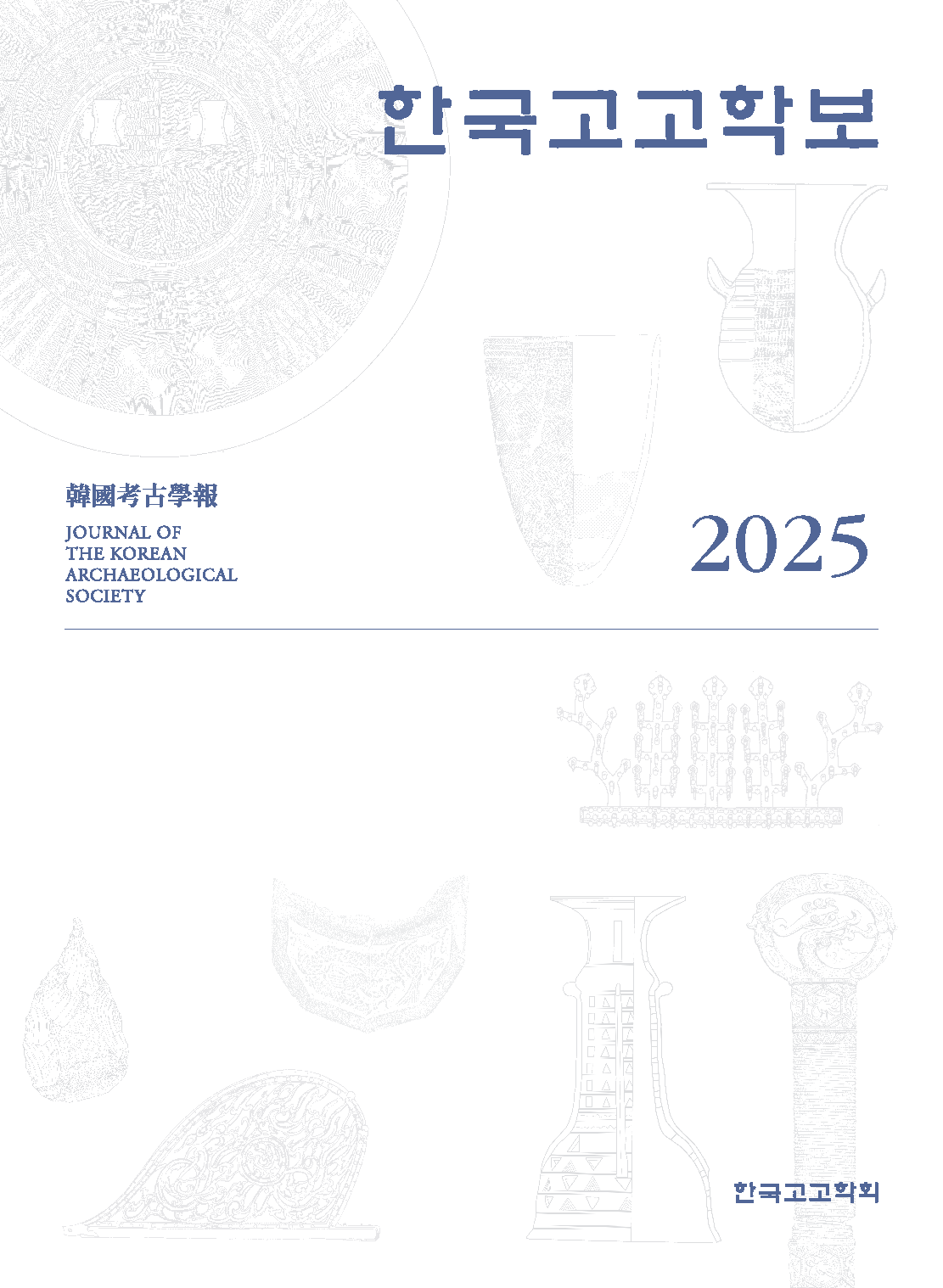학술논문
한반도 고대 유리의 재활용 가능성 검토—혼합알칼리유리를 중심으로
이용수 48
- 영문명
- Re-assessing Ancient Glass Recycling on the Korean Peninsula—A Study on Mixed Alkali Glass
- 발행기관
- 한국고고학회
- 저자명
- 조대연
- 간행물 정보
- 『한국고고학보』제135집, 391~416쪽, 전체 26쪽
- 주제분류
- 인문학 > 역사학
- 파일형태
- 발행일자
- 2025.06.30
5,920원
구매일시로부터 72시간 이내에 다운로드 가능합니다.
이 학술논문 정보는 (주)교보문고와 각 발행기관 사이에 저작물 이용 계약이 체결된 것으로, 교보문고를 통해 제공되고 있습니다.

국문 초록
본 연구에서는 삼국시대 한반도에서 출토된 혼합알칼리유리(Mixed Alkali Glass, 이하 MAG)의 화학조성과 출토 맥락을 분석하여 해당 유리가 재활용 과정을 거쳐 형성된 것인지의 여부를 규명하고자 했다. 이를 위해 국내에서 축적된 자연과학 분석 자료를 재검토하고, 나트륨(Na₂O)/칼륨(K₂O) 비율의 변화, 산화칼슘(CaO) 및 산화 알루미늄(Al₂O₃) 함량의 증감을 주요 분석 지표로 삼아 해당 유리의 재활용 여부를 평가하였다. MAG는 나트륨(Na₂O)과 칼륨(K₂O)이 주요 알칼리 성분으로 포함된 혼합조성의 유리로서 단일조성의 소다유리나 포타쉬유리와는 구별된다. 본 연구에서 MAG를 단순한 ‘편년적 과도기의 산물’이 아니라 ‘다양한 공정을 통해 형성된기술사적 산물’로 새롭게 해석하였다.
이번 분석 결과를 정치체별로 살펴보면, 백제 지역의 MAG는 대개 화학조성의 변동성이 크게 나타나고 그 불순물 함량도 높아서 기존 유리의 재용융 혹은 재활용이 이루어졌을 가능성이 높다고 판단되었다. 이와는 대조적으로, 신라의 경우 경주 덕천리유적에서 확인된 MAG는 화학조성이 일정하고 불순물 함량이 낮아서 처음부터 정제된 유리 반제품을 기반으로 제작되었을 가능성을 제기하였다. 가야의 MAG 역시 신라와 유사한 경향을 보이고 있다. 한편, 백제의 경우 MAG가 확인되는 유적과 유리 거푸집이 확인되는 유적의 공간적 분포 양상이 그다지 겹치고 있지 않다. 이는 백제에서 유리 거푸집을 이용한 재활용 공정의 실행 가능성이 낮으며, 이들 거푸집은 정상적인 유리 제품을 제작하기 위한 용도로 사용된 것으로 평가하였다. 이처럼 본 연구에서 필자는 MAG의 형성 배경 분석을 진행하여 삼국 간 유리 생산기술 및 유통 방식의 차이점을 드러내고자 했다. 향후 본 연구의 문제의식을 발전시키기 위해서 융복합적 연구의 세밀한 진행, 동아시아 전반의 MAG 비교 연구, 그리고 실험고고학적 접근을 통한 유리 연구의 필요성을 강조했다.
영문 초록
In this study, the chemical composition and archaeological context of Mixed Alkali Glass(MAG) excavated from sites on the Korean Peninsula dating to the Three Kingdoms period were analyzed to determine whether the glass had been formed through recycling processes. MAG is a glass of mixed composition, with sodium (Na2O) and potassium (K2O) as the main alkali components, distinguishing it from mono-alkali soda glass and potash glass. In this study, MAG is not regarded merely as a by-product of a transitional phase but rather as a technological product formed through various processes, including the remelting of existing glass, the mixing of heterogeneous compositions, or the use of deliberately prepared mixed raw materials. The existing scientific analytical data accumulated in Korea were also reassessed, and the possibility that the glass may have been obtained through recycling was evaluated by analyzing changes in the Na2O/K2O ratio as well as variations in calcium oxide (CaO) and aluminium oxide (Al2O3) content as key indicators.
According to the analysis, the MAG samples recovered from Baekje sites appear to be characterized by quite unstable chemical compositions, and impurity levels were also found to be quite high. This may suggest that the glass had not been freshly made but rather came from reused or melted-down older glass. On the other hand, MAG samples from the Deokcheon-ri site in Gyeongju (Silla) were found to be more stable in their composition, and impurities were also limited, suggesting that the materials used were new and purified from the beginning. In Gaya, it also appears that MAG glass was produced using a mixture of raw materials, and this process may have occurred repeatedly within some organized system. However, in the case of Baekje, it can be observed that the locations of the MAG glass finds and the glass mould finds are not close and do not overlap significantly. This indicates that the moulds were probably not used to recycle regular items.
Through this study, the technological and organizational differences in glass production and distribution among the Three Kingdoms were highlighted, and the need for further interdisciplinary research, as well as comparative studies of MAG across East Asia and the application of experimental archaeological approaches, was emphasized.
목차
Ⅰ. 머리말
Ⅱ. 연구 현황 및 연구 방법
Ⅲ. 유럽 고고학계의 유리 재활용 연구 성과와 시사점
Ⅳ. 한반도 고대 유리 자료 분석
Ⅴ. 고찰: 한반도 고대 유리 재활용의 특징과 국가별 차이
Ⅵ. 맺음말
참고문헌
키워드
해당간행물 수록 논문
참고문헌
관련논문
최근 이용한 논문
교보eBook 첫 방문을 환영 합니다!

신규가입 혜택 지급이 완료 되었습니다.
바로 사용 가능한 교보e캐시 1,000원 (유효기간 7일)
지금 바로 교보eBook의 다양한 콘텐츠를 이용해 보세요!



